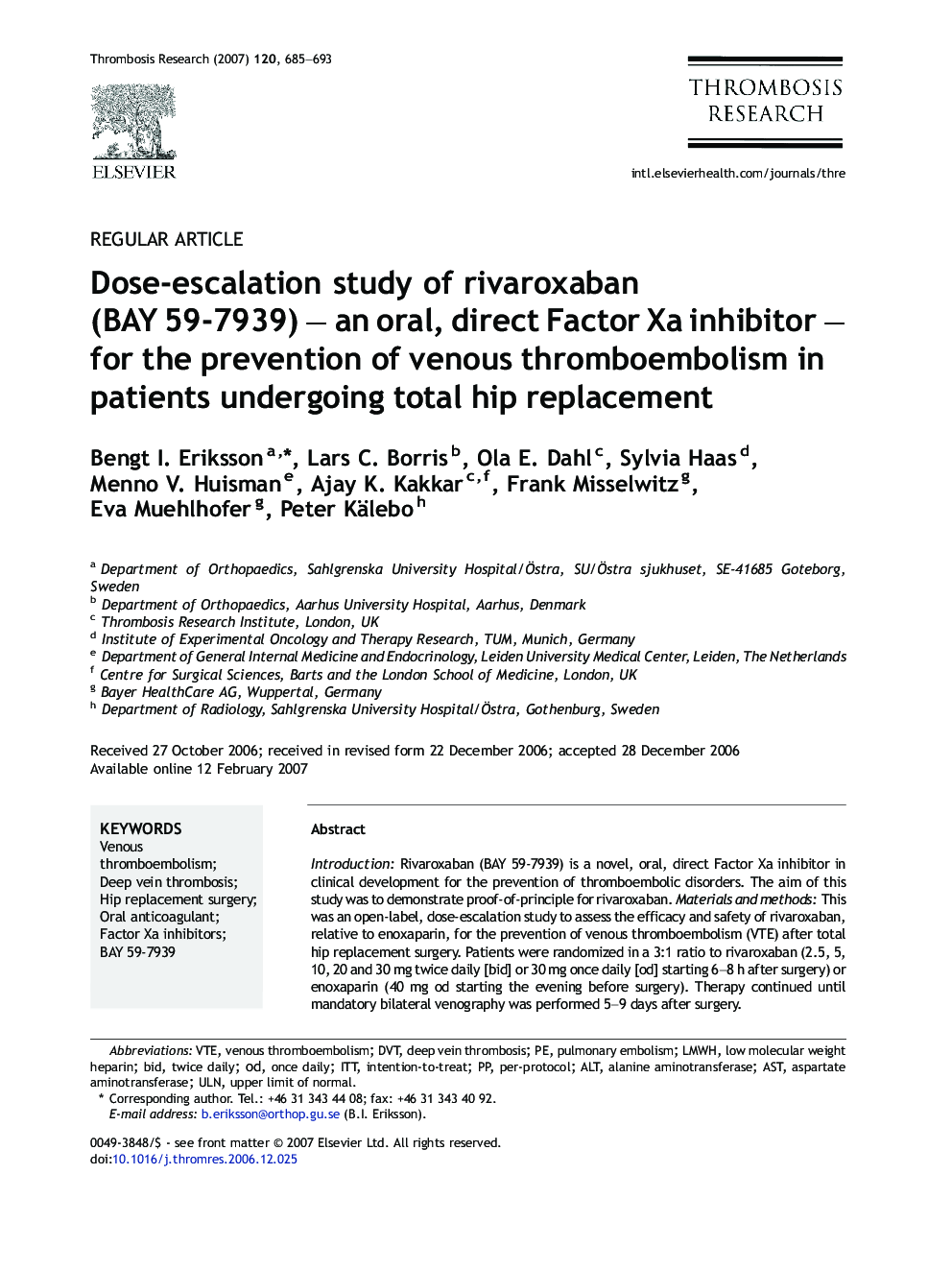| Article ID | Journal | Published Year | Pages | File Type |
|---|---|---|---|---|
| 3029943 | Thrombosis Research | 2007 | 9 Pages |
AbstractIntroductionRivaroxaban (BAY 59-7939) is a novel, oral, direct Factor Xa inhibitor in clinical development for the prevention of thromboembolic disorders. The aim of this study was to demonstrate proof-of-principle for rivaroxaban.Materials and methodsThis was an open-label, dose-escalation study to assess the efficacy and safety of rivaroxaban, relative to enoxaparin, for the prevention of venous thromboembolism (VTE) after total hip replacement surgery. Patients were randomized in a 3:1 ratio to rivaroxaban (2.5, 5, 10, 20 and 30 mg twice daily [bid] or 30 mg once daily [od] starting 6–8 h after surgery) or enoxaparin (40 mg od starting the evening before surgery). Therapy continued until mandatory bilateral venography was performed 5–9 days after surgery.ResultsA total of 625 patients received therapy, of whom 466 patients were eligible for the per-protocol efficacy analysis. The primary efficacy endpoint – deep vein thrombosis (DVT), pulmonary embolism (PE) or all-cause mortality – occurred in 22.2%, 23.8%, 20.0%, 10.2%, 17.4%, 15.1% and 16.8% of patients receiving rivaroxaban 2.5, 5, 10, 20, 30 mg bid, 30 mg od and enoxaparin, respectively. The dose-response relationship with rivaroxaban for the primary efficacy endpoint was not statistically significant (p = 0.0504), although major VTE (proximal DVT, PE and VTE-related death) decreased dose dependently with rivaroxaban (p = 0.0108). Major, post-operative bleeding increased dose dependently with rivaroxaban (p = 0.0008), occurring in 0–10.8% of patients, compared with 0% in patients receiving enoxaparin.ConclusionsThis study demonstrated proof-of-principle for rivaroxaban for the prevention of VTE after total hip replacement surgery.
